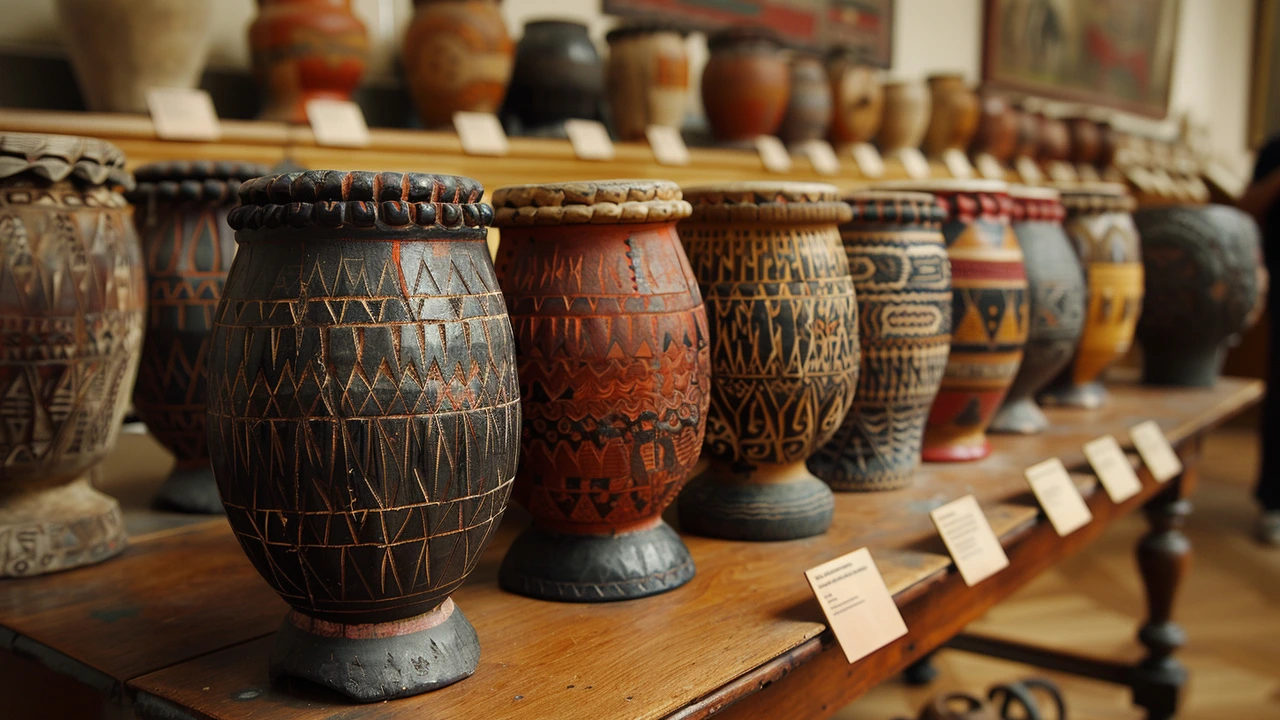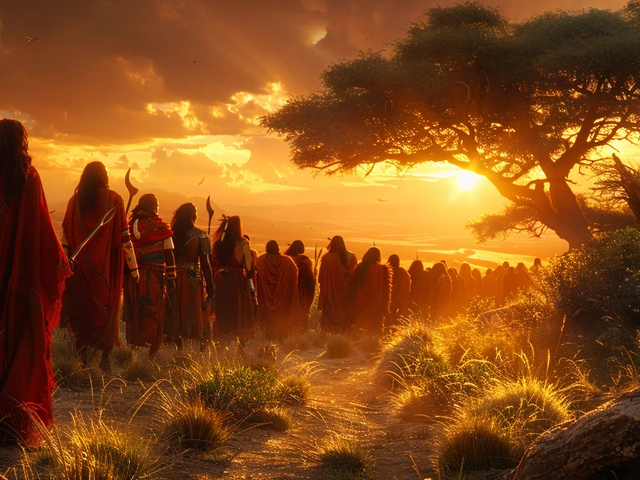Rungu: The Multi-purpose African Weapon – History, Uses, and Significance

Unearthing the Origins of Rungu
The rungu, a traditional African throwing club or stick, has roots deeply embedded in the fabric of many African cultures. Often made from sturdy wood, the rungu boasts a distinctive shape, featuring a heavy, rounded head on one end and a slender handle on the other. Its design is no accident; each aspect serves a purpose, meticulously crafted by skilled artisans who have passed down their knowledge through generations.
While the rungu's origins are difficult to pinpoint to a single time and place, it is widely acknowledged that it has been a staple in East African communities, particularly among the Maasai, Samburu, and Turkana tribes. These groups have long revered the rungu not only as a weapon but also as a symbol of power, courage, and social status. The weapon's use in hunting, combat, and ceremonial contexts underscores its versatility and enduring importance.
In discussing the historical significance of the rungu, one cannot ignore its role in tribal conflicts and protection. Warriors adept in the art of throwing the rungu could incapacitate an opponent from a distance, a skill that was highly regarded and often decisive in skirmishes. Beyond warfare, the rungu's utility in hunting demonstrates the ingenuity of these communities in leveraging their resources for survival.
The Rungu: A Multi-functional Tool in Everyday Life
Aside from its martial applications, the rungu serves multiple functions within African societies. Its design lends itself well to use as a walking stick, a symbol of authority, and even as a tool for tending to livestock. Chiefs and elders often carry a rungu as a sign of their leadership and wisdom, signifying their role in making decisions and settling disputes.
The practical application of the rungu extends to herding, where it is used to guide and control cattle. Its effectiveness in this realm exemplifies the close relationship between people and their environment, showcasing the adaptability of traditional tools to meet contemporary needs.
In many communities, the rungu also plays a role in rituals and ceremonies. It may be wielded in dances and celebrations, imbued with cultural significance that transcends its physical utility. Through these practices, the rungu connects past and present, allowing for the transmission of cultural values and history in a tangible form.
Rungu as a Cultural Icon and Symbol
The symbolic value of the rungu in African cultures cannot be overstated. It embodies strength, leadership, and community cohesion, serving as a tangible connection to ancestors and tradition. The rungu is often presented as a gift to mark significant life events, such as coming-of-age ceremonies or the assumption of leadership roles, further cementing its status as a cherished cultural artifact.
The craftsmanship involved in creating a rungu is an art in itself, with artisans selecting materials and designs that reflect the identity and values of their community. This customization adds layers of meaning to each rungu, making it not just a tool or weapon, but a personalized emblem of heritage.
Moreover, the rungu's place in African culture is a testament to the resilience and creativity of these societies in the face of change. As modernization and globalization present new challenges, the rungu remains a symbol of continuity and a source of pride.
Preserving the Legacy of the Rungu
As with many aspects of traditional culture, the relevance of the rungu in contemporary society faces challenges. Urbanization and changing lifestyles have diminished its everyday use, leading to concerns about the erasure of this cultural icon from collective memory. However, initiatives aimed at preserving and celebrating the rungu's legacy are gaining momentum.
Artisans and cultural institutions play a critical role in keeping the craft alive, offering workshops and demonstrations that engage both locals and tourists. Museums and cultural festivals provide platforms for showcasing the history and significance of the rungu, fostering appreciation and understanding among wider audiences.
By documenting and promoting the multifaceted roles of the rungu, communities can ensure that this symbol of African heritage continues to inspire future generations. Through education and cultural exchange, the rungu can transcend its traditional boundaries, becoming a global ambassador for the rich traditions from which it hails.




